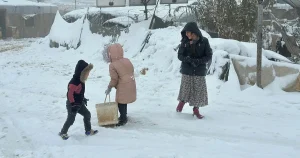Paragraph 1: Sweden’s Qualifying Journey Begins
Sweden’s quest for a place in the FIFA World Cup has begun with their placement in a four-team qualifying group. This group, designated as Group B, includes Switzerland, Slovenia, and Kosovo. The qualifying matches are set to commence in the autumn of the following year. Among the highest-seeded teams in this group is Switzerland, posing a significant challenge for Sweden. The group’s composition suggests a competitive qualifying campaign, with each match holding crucial importance.
Paragraph 2: The Structure of European Qualifiers
The European qualifying process features twelve groups, with half comprising five teams and the other half consisting of four. The structure is designed to ensure a balanced and competitive pathway to qualification. The final composition of several groups remains pending, as eight spots hinge on the outcomes of the Nations League quarterfinals scheduled for March. These quarterfinals will determine the placement of teams in the World Cup qualifying groups, adding another layer of complexity and anticipation.
Paragraph 3: The Path to Qualification
A total of 16 European teams will secure their places in the World Cup. The winners of each of the twelve qualifying groups will earn direct qualification. The teams finishing second in their groups will advance to a playoff round, competing for the remaining four World Cup berths. This ensures a second chance for teams that narrowly missed direct qualification.
Paragraph 4: Nations League Influence on Playoffs
The playoff round will also feature four additional teams determined by their performance in the Nations League. The top four group winners of the Nations League not already qualified through the conventional group stage will also enter the playoffs. This inclusion of Nations League results adds a strategic element to the qualification process, rewarding success in this separate competition.
Paragraph 5: Sweden’s Backup Plan
Sweden finished as the tenth-best group winner in the Nations League. While this doesn’t guarantee a playoff spot, it provides a potential safety net. Many of the higher-ranked Nations League group winners are expected to secure World Cup qualification directly through their qualifying groups. If this happens, Sweden’s tenth-place finish could be sufficient to earn them a playoff spot should they not finish first or second in their qualifying group.
Paragraph 6: Detailed Group Composition
The twelve qualifying groups are as follows: Group A (winner of Germany vs. Italy, Slovakia, Northern Ireland, Luxembourg); Group B (Switzerland, Sweden, Slovenia, Kosovo); Group C (winner of Portugal vs. Denmark, Greece, Scotland, Belarus); Group D (winner of France vs. Croatia, Ukraine, Iceland, Azerbaijan); Group E (winner of Spain vs. Netherlands, Turkey, Georgia, Bulgaria); Group F (winner of Portugal vs. Denmark, Hungary, Ireland, Armenia); Group G (loser of Spain vs. Netherlands, Poland, Finland, Lithuania, Malta); Group H (Austria, Romania, Bosnia and Herzegovina, Cyprus, San Marino); Group I (loser of Germany vs. Italy, Norway, Israel, Estonia, Moldova); Group J (Belgium, Wales, North Macedonia, Kazakhstan, Liechtenstein); Group K (England, Serbia, Albania, Latvia, Andorra); and Group L (loser of France vs. Croatia, Czech Republic, Montenegro, Faroe Islands, Gibraltar). The groups represent a diverse mix of European football nations, each vying for the coveted World Cup spots. The inclusion of Nations League results in shaping the final group composition adds a unique dynamic to the traditional qualifying structure.














